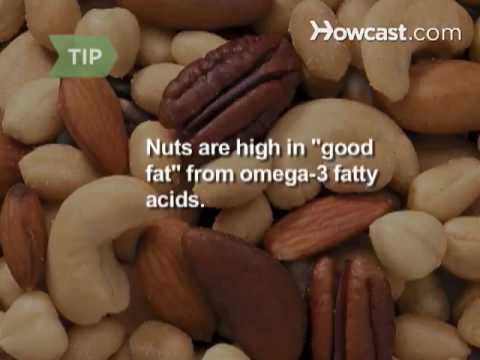
Beans are often used in soups and casseroles. Sometimes, however, they can also be cooked into sauces to make meals. These sauces can either be used hot or at room temp. Home cooks often don't have enough time to make beans from scratch. So they turn to canned beans and pre-prepared beans. These are great for quick meals on the weekends. You can top them with cheese, sour-cream, or guacamole. The result is both healthy and delicious.
Follow these simple steps to make a simple bean sauce. Pre-soak beans in two inches of water. Next, boil the beans until soft. They will take longer to cook if the beans are still very hard. It will all depend on how old the beans are.
It is important to make sure you stir the beans every so often. To improve the flavor of the beans you should add fresh herbs. You can add the herbs just before serving. Vegetable stock is better than meat if you're making this vegetarian version. This sauce can be stored up to one month.

You will need to prepare the sauce by using a small saucepan with vegetable oil. You can also heat the beans in the microwave. But the beans should only be cooked for 2 minutes. When using canned beans, drain them and rinse them. The sauce can also be made with liquid smoke, but this should only happen after 2 minutes.
There are two types generally of bean sauces: the ground bean and the crushed bean. Both have a salty and savory flavor. Crushed beans can be more salty than whole beans. Whole beans are often left unsweetened.
If you're using crushed bean sauce, add more spices to enhance its flavor. For example, you can add fresh red chilli to your beans to make them spicy. To temper the saltiness, you can add garlic to your sauce. You can also add cumin and coriander to your ground bean sauce. You can also add chopped parsley just before serving. You can also use vegetable stock to make this dish.
If you are making a vegetarian version of the dish, you should increase the olive oil and skip the bacon. Also, you can add spinach to your sauce. These vegetables can also be cooked for a few additional minutes.

The beans can be prepared from scratch, so you don't need to buy canned. You can also add the beans to your meats and vegetables if you plan on using them as part of a meal. You can also freeze leftovers so that you can use them in a new meal. It takes less than 45 minutes to make a delicious dinner.
You can also make your very own black bean soup using chicken broth and vegetable soup. You can also add fresh garlic, orange zest, and other spices to make a savory sauce.
FAQ
How to measure bodyfat?
A Body Fat Analyzer is the best way to measure body weight. These devices can be used to measure body fat percentages in people who are trying to lose weight.
What is the ideal weight for my height? BMI calculator & chart
Use a BMI calculator to determine how much weight is needed to lose. A healthy BMI range is between 18.5 and 24.9. Weight loss is possible if you aim to lose approximately 10 pounds per week. Simply enter your height/weight into the BMI calculator.
This BMI chart shows you if it is possible to identify if you are either overweight or obese.
What can you do for your immune system to improve?
There are trillions of cells in the human body. These cells work together to form organs and tissues that perform specific functions. If one cell dies, a new cell replaces it. The chemical signals known as hormones are used to communicate between cells. Hormones regulate every bodily process, from growth and development to metabolism as well as immunity.
Hormones are chemicals secreted by glands throughout the body. They travel through the blood stream and act like messengers to control how our bodies function. Some hormones can be produced within the body while others can be made outside.
When a hormone-producing gland releases their contents into the bloodstream, hormone production begins. Once hormones become active, they move throughout the body until reaching their target organ. In some cases, hormones remain active only for a short period of time. Other hormones stay active longer and continue to influence the body's functioning even after they leave the bloodstream.
Some hormones can be produced in large amounts. Others are only produced in very small quantities.
Certain hormones can only be produced at specific times in life. For example, estrogen is made during puberty. Estrogen is important for women to develop breasts and maintain bone density. It also helps prevent osteoporosis. It helps to stimulate hair growth and maintains skin's softness.
Statistics
- In both adults and children, the intake of free sugars should be reduced to less than 10% of total energy intake. (who.int)
- nutrients.[17]X Research sourceWhole grains to try include: 100% whole wheat pasta and bread, brown rice, whole grain oats, farro, millet, quinoa, and barley. (wikihow.com)
- Extra virgin olive oil may benefit heart health, as people who consume it have a lower risk for dying from heart attacks and strokes according to some evidence (57Trusted Source (healthline.com)
- According to the 2020 Dietary Guidelines for Americans, a balanced diet high in fruits and vegetables, lean protein, low-fat dairy and whole grains is needed for optimal energy. (mayoclinichealthsystem.org)
External Links
How To
What does the "vitamin") mean?
Vitamins are organic compounds found naturally in food. Vitamins allow us to absorb nutrients from food. Vitamins cannot come from the body so food must provide them.
There are two types of vitamins: water soluble and fat soluble. Water-soluble vitamins dissolve in water easily. These include vitamin C (thiamine), Vitamin B1 (riboflavin), Vitamin B2 (riboflavin), Vitamin B3 (niacin), Vitamin B6 (pyridoxine), Vitamin C, B1 (thiamine), Vitamin B2 (riboflavin), Vitamin B3 (niacin), and Vitamin B6 (pyridoxine). Fat soluble vitamins are stored in the liver and fatty tissue. Examples include vitamin D, E, K, A, and beta carotene.
Vitamins can be classified by their biological activity. There are eight main groups of vitamins.
-
A - vital for normal growth and maintaining good health.
-
C - important for proper nerve function and energy production.
-
D - Essential for healthy teeth and bones.
-
E is required for good vision and reproduction.
-
K - Essential for healthy muscles and nerves.
-
P - vital for building strong bones andteeth.
-
Q - aids digestion, absorption and absorption iron
-
R - Required for red blood cell production
The recommended daily allowance of vitamins (RDA), varies depending upon age, gender, physical condition, and other factors. The U.S. Food and Drug Administration has established the RDA values.
For example, the RDA for vitamin A is 400 micrograms per dayfor adults 19 years or older. Pregnant mothers need 600 micrograms a day to ensure fetal growth. Children ages 1-8 require 900 micrograms per day. Children under 1 year old require 700 micrograms daily, while infants over one year old need 500 micrograms every day. This decreases between 9 and 12 months.
Children between the ages of 1-18 need 800 micrograms per daily for obesity, while those overweight require 1000 micrograms. To meet their nutritional needs, children underweight and obese need 1200micrograms.
Children ages 4-8 years who have been diagnosed with anemia need 2200 micrograms per day of vitamin C.
2000 micrograms is the minimum daily intake for general health in adults older than 50 years. Mothers who are pregnant, nursing, or have a high nutrient need will require 3000 micrograms a day.
Adults over 70 require 1500 micrograms each day, since they lose approximately 10% of muscle mass each decade.
Women who are pregnant and lactating need more nutrients than the RDA. Pregnant women require 4000 micrograms daily during pregnancy, and 2500 micrograms every day after birth. Breastfeeding mothers need to consume 5000 micrograms each day when breastmilk has been produced.